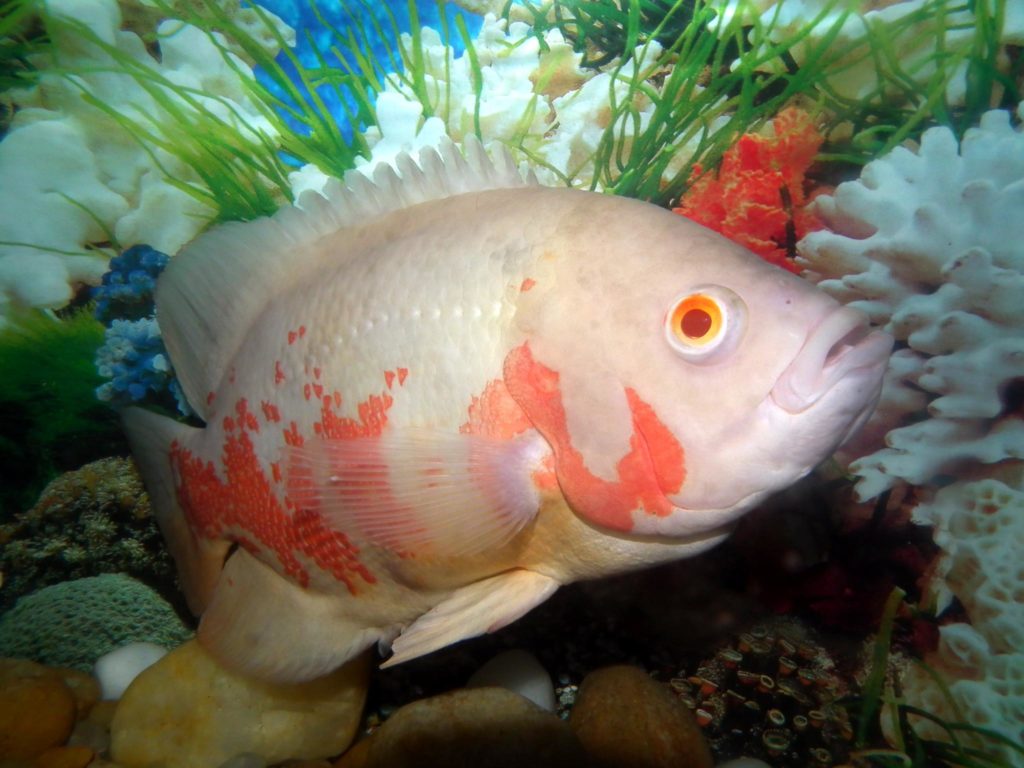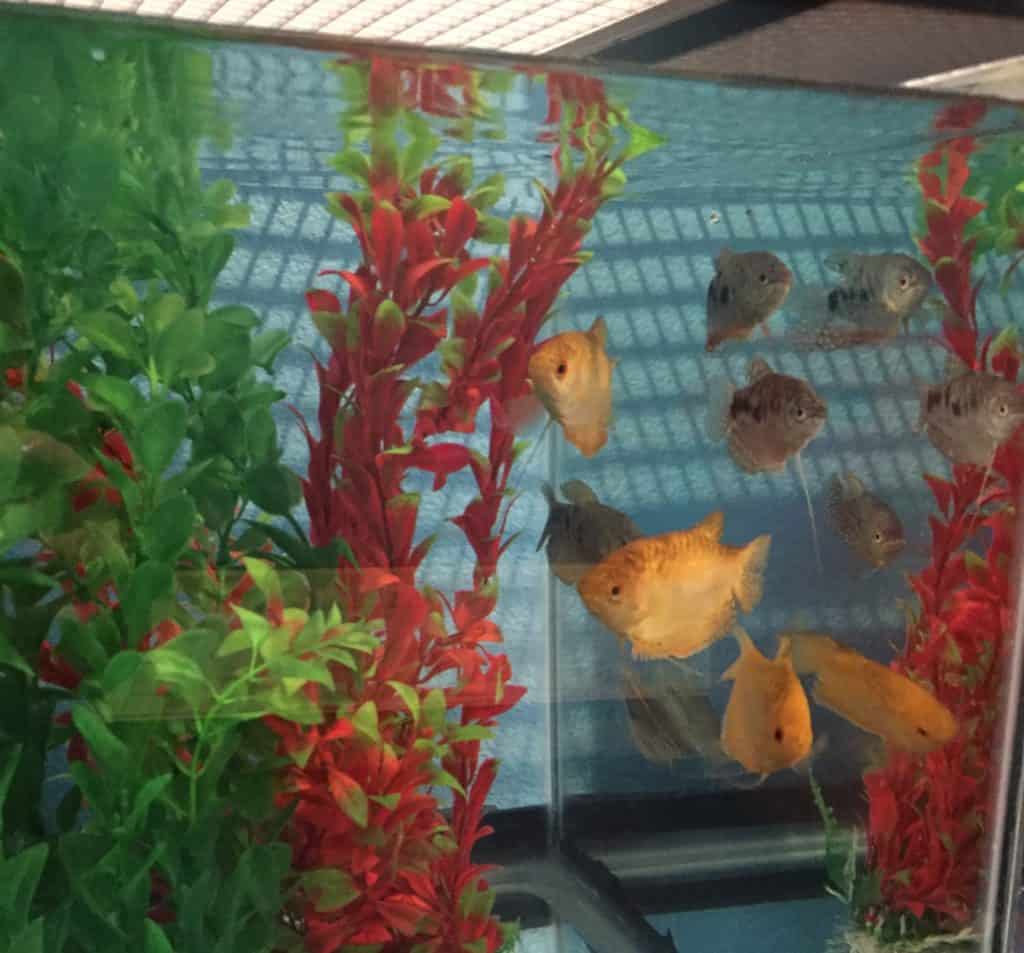**Post contains affiliate links**
Hole in the head disease, also known as head and lateral line erosion, is a common disease in many freshwater and saltwater fishes. Many hobbyists are quick to grab an OTC drug to treat the initial sign, without digging into the deeper cause. Learn how to successfully treat hole in the head disease and prevent it from returning.
What is hole in the head disease?
Hole in the head disease is characterized by small, dark holes or depressed areas around the head and lateral line of many freshwater and saltwater species. There may be just a few spots, or many. They may be all the same color, or vary in color, size and depth.
What causes hole in the head disease?
The primary cause of hole in the head disease is stress. Stress in fish can be caused by many different environmental conditions, including water quality, diet, aggression, space and other causes. If a stressor persists in an environment that a fish cannot escape, it actives a chronic stress pathway, leading to decreased reproduction, growth and immune function. Once the immune function has been impacted, bacteria on the skin of a fish can take advantage of the weakened defenses and start causing localized infections.

How to treat hole in the head disease
The main focus of treating hole in the head disease is to eliminate the primary stressor.
Fix Your Water Quality
Poor water quality is the #1 cause of hole in the head disease. Any methods in how to treat hole in the head should start with a thorough evaluation of your water chemistry. Forget those useless test strips and test with a liquid-based test kit purchased within the last year. Your ammonia, nitrite, nitrate, pH, kH, gH, temperature and salinity should all be within range. If they are not, you need to start taking steps to correct your poor water quality. Fixing this alone is usually enough to fix your fish.
Feed an Appropriate Diet
Depending on your fish species, diets can vary widely. No matter what you are feeding, be sure that you have opened it within the last 6 months. After that period, the water-soluble vitamin content, including vitamin C, has severely diminished. It does not make sense to buy fish food in bulk! Freezing will only destroy some of the water-soluble vitamins since they don’t use the more stable form for fish foods.
Deal with Bullies
Bullies are aggressive fish that steal food and resources from other fish. Do not let size fool you! We have seen very small aggressive fish nipping at larger fish’s gills during meal times, stressing them out and causing hole in the head. If you cannot spread out the meal, it is time to find the bullies a new home. No matter how your fish is “supposed” to act around others, some do not follow the rules and just don’t play nice with others.
Sensational Overload
With a fish’s sensitive hearing and lateral line organ, noise pollution can stress fish out easily. This can include noise from filtration components, TVs, stereos and slamming doors. If you have any of these elements near your fish tank, consider placing them in different places or providing insulation for your fish.
Only once you have eliminated and resolved the stressful issue should you even consider any additional therapy. If you jump right to antibiotics, not only are you treating your system with a bacteria-eliminating bomb (goodbye bio filter), but the issue will persist and return following therapy. Many OTC “antibiotics” work by making you do water changes! If your fish does not improve after eliminating all potential stressors, contact your aquatic veterinarian for appropriate treatment.


Hi I removed the bully and the three remaining oscars seem so much better. One has a few small holes two have one I have been defrosting their food and adding Metronidazole and garlic oil refreezing. All three fish eat a block of this food and really never lost their appetites. How log should I keep this up ?? Thanks a million Paul Jr
Glad your fish are doing better. For medication instructions, please follow up with your prescribing veterinarian.
Hi Dr. Jessie. I have a pearlscale goldfish. Gordo. Use to swim. But now he just sits at bottom of tank. He won’t even swim for his food. But will still eat. Please help me? Have a blessed day
Rayne. Fish mom….
If you are concerned about your fish, please call (831) 278-1081 for veterinary assistance. If you are outside California and Nevada, please visit https://fishvets.org or https://wavma.org